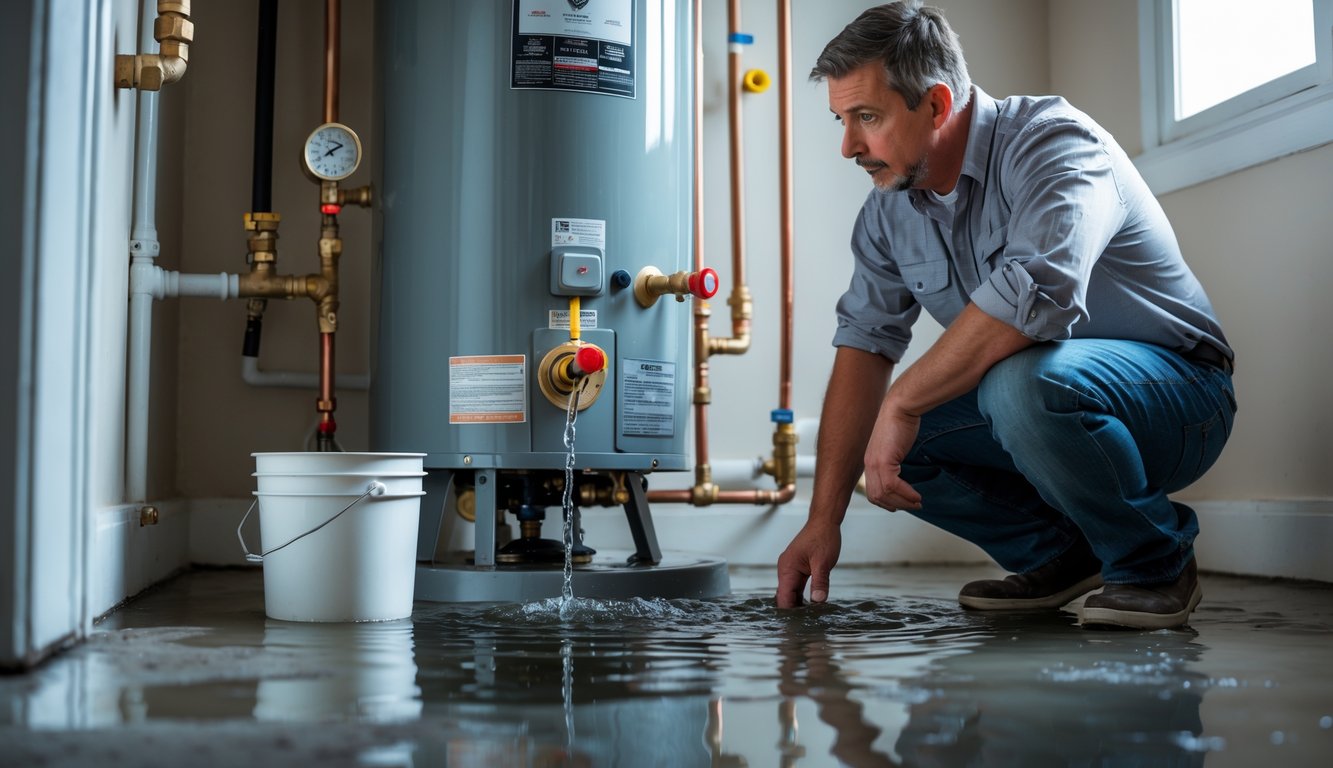
Overlooked Signs Before Major Leaks
Funny how leaks always wait for the worst possible moment—like, towels everywhere, “quick fix” kit buried behind a fake Christmas tree. It’s never dramatic at first. The signs just sort of sneak in: weird water, funky noises, stuff you can’t explain. Ignore them and, well, you’re probably going to regret it. I’ve made those panicked late-night calls, and trust me, it’s never a good story.
Discolored or Rusty Water
You ever turn on the shower and get…brownish water? Maybe coppery, maybe with little flecks. That sinking feeling? Yeah, I’ve been there. Most people blame the pipes, but it’s usually the water heater rusting from the inside out. The anode rod (supposed to be checked every 1–3 years—yeah, right) corrodes and nobody notices.
If you see rusty water, try this: fill a glass from the hot tap, then the cold. If only the hot is murky, congrats, it’s your heater, not the pipes. No need for fancy tests. I watched a neighbor ignore this until the tank finally clogged up and dumped water all over the kitchen. Not a good look.
Strange Noises During Operation
People say, “It’s just the pipes settling,” while the heater sounds like it’s making popcorn. That’s not normal. It’s usually sediment frying on the tank bottom. I ignored it for months once. Didn’t end well. The banging isn’t “quirky,” it’s your tank begging for help. Plumbers (Angie’s List says this too) recommend yearly flushes, but most people skip it because it’s annoying.
I had a client whose tank “talked” for weeks before it leaked through the basement. Cost them triple what a flush would’ve. The longer you leave sediment, the more it stresses the tank. Leaks are just a matter of time. Save the horror movie sounds for Halloween.
Temperature Inconsistencies
Why do people shrug off hot-and-cold shocks in the shower? It’s not quirky, it’s a warning. Temperature swings usually mean thermostat or sediment problems. My dad warned me, but I ignored him until the water cycles got so weird they almost scalded the cat. Always check for a lag between turning the tap and getting hot water.
It’s tempting to blame the city’s water, but Energy.gov says if you get slow or half-hot water, it’s probably minerals messing with the heating elements. Ignore it, and you’ll get cracks, leaks, and a repair bill that’ll make you cry. By the time the water goes cold or the tank finally thaws, it’s not a warning anymore—it’s a disaster. Just remember, that “refreshing chill” might cost you two grand.
Sediment Build-Up and Its Consequences
It’s weird—every time my tank heater rumbles, I think, “Eh, probably nothing.” But, no, it’s almost always sediment. Hard water sneaks in, leaves behind calcium and magnesium like it’s showing off. And, yeah, all that inefficiency just quietly eats your money.
How Sediment Affects Performance
Honestly, I’m still annoyed that nobody ever tells you a brand-new tank water heater starts collecting sediment in, like, four months if your water’s even a little hard. Plumbers always warn you about grit piling up at the bottom, but is it real or are they just trying to upsell? I used to think it was nonsense until my own tank started acting up.
So what actually happens? Suddenly your faucet spits, or the shower turns into a sad trickle. First guess? Pipes are clogged. Wrong. It’s just sediment forming a crusty little sandbar, blocking the drain valve and hogging space inside the tank. Rheem’s maintenance guide literally says to “flush your heater annually,” but who remembers? I never do. That so-called “minor” buildup? It’s like a silent invitation for leaks, especially pinhole ones that sneak up under finished basements. I had to replace drywall once—trust me, that’s a bill you don’t want.
If you’ve got hard water, forget it—minerals basically throw a house party in your heater. It’s not rare, either. Water Quality Association found, get this, 98% of homes in some areas had tank sediment within 18 months. And realtors? They won’t even bother with basements showing heater rust. “It’s never just cosmetic,” they say. Sure.
Impact on Heating Efficiency
I lose it every time my energy bill spikes after skipping a tank flush all winter. Here’s something I wish I’d known: just half an inch of sediment can jack up your fuel use by 30% or more. That’s not a typo; the Department of Energy actually says that.
The heating element’s basically buried alive under all that junk, so the burner just keeps running, way longer than it should. That ticking sound? Not normal. It’s steam bubbles trapped under the sediment, making your heater work overtime for a lukewarm shower. No one ever says, “Hey, check for weird temperature swings,” but it’s a dead giveaway.
And it just gets worse. Heating elements die early—especially in electric models—because you’re heating up minerals, not water. If you’re cheap like me and try to stretch the heater’s life, that’s forty minutes of wasted energy every day. Trane says flush it yearly, but whenever I skip it, I end up paying double: first on the power bill, then for a new heater.
Nobody tells you your “efficient” heater is actually a mineral oven unless you dig through old service records or maybe, if you’re lucky, a building inspector points it out. Usually? Nope.